![]()
![]()
![]()
Use LEFT and RIGHT arrow keys to navigate between flashcards;
Use UP and DOWN arrow keys to flip the card;
H to show hint;
A reads text to speech;
36 Cards in this Set
- Front
- Back
|
What are the clades of the protists?
|
Excavata, chromalveolata, Rhizaria, Archaeplastida, and Clade Unikonta.
|
|
|
Clade chromalveolata belong to what higher group?
|
Protists
|
|
|
Clade rhizaria belong to what higher group?
|
Protists
|
|
|
Clade archaeplastida belong to what higher group?
|
Protists
|
|
|
Clade unikonta belong to what higher group?
|
Protists
|
|
|
Clade excavata belong to what higher group?
|
Protists
|
|
|
Clade excavata includes what other groups?
|
Diplomonads, Parabasalids(trichomonas vaginalis), Kinetoplastids (trypanosome cruzi), and Euglenoids (euglena)
|
|
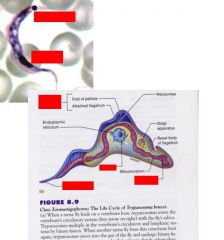
Identify the flagella, nucleus, kinetoplastic, and undulating membrane of this Kinetoplastid.
|

|
|
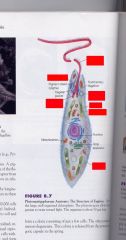
Identify the Nucleous, Flagella, Eyespot & Photoreceptor, Contractile Vacuole, Chloroplast, and Pyrenoid of this Euglenoid.
|
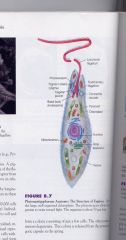
|
|
|
Lab practical will have Clade Chromalveolata include what two subgroups?
|
Alveolates and Stramenophiles
|
|
|
In lab practical #1, the Alveolates make up what three other groups?
|
Dinoflagellates, Apicomplexans:Plasmodium, and Ciliates:Paramecium.
|
|
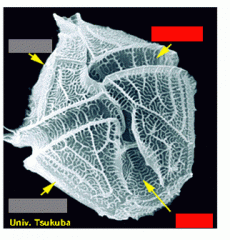
Identify the cingulum, and sulcus of this Dinoflagellate:
|

|
|

Identify the Macronucleus & micronucleus, oral groove, Cilia, and Vacuoles of this Paramecium:
|
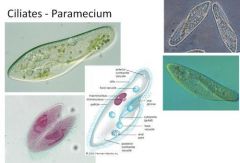
|
|
|
Stramenophiles include what subgroups?
|
Diatoms and Brown Algae
|
|
|
Diatoms is a reference to?
|
Twotheca or lidsl
|
|
|
What forms of diatoms are there?
|
Radial,Pennate, and Bipennate forms with a central raphe.
|
|
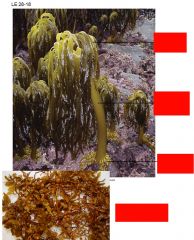
Identify the Thallus, Hold Fast, Stipe, Blades, and Air bladders of this Brown Algae/Kelp:
|
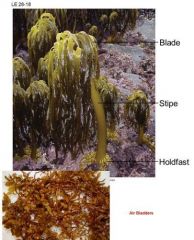
NEEDSFILLIN
|
|
|
In lab practical #1, Clade Rhizaria includes what subgroups?
|
Radiolarins, Forams, and Cercozoans.
|
|
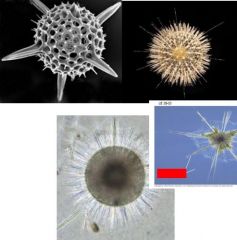
Identify the axiopodia of a ________________:
|
Red box is axiopodia of a radiolarin!
|
|

Identify the test/shell with foramen:
|
All of these are foramen but the right one says it has a shell (test)
|
|
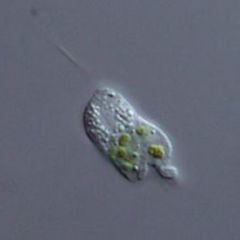
Identify
|
Cercozoan
|
|
|
In lab practical #1, Clade Arachaeplastida include what subgroups?
|
Red Algae(phylum Rhodophyte), and Green Algae(Phylum Chlorophyta)
|
|
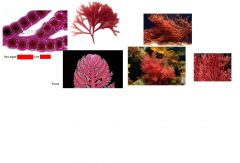
Identify a general red algae:
|
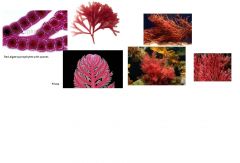
|
|
|
Chlamydomonas uniquely have what?
|
Flagella, and contractile vacuole
|
|
|
Volvox uniquely have what?
|
Individual vegetative cells, daughter colonies(generative cells)
|
|
|
Spirogyra uniquely have what?
|
Spiral chloroplasts
|
|

Identify which of the following is unicellular(chalmydomonas), colonial(Volvox), filamentous(Spirogyra) and multicellular(sea lettuce)
|
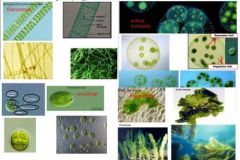
|
|
|
In lab practical #1, Clade Unikonta has what subgroups?
|
Amoebozoans and Opisthokonts.
|
|
|
The amoebozoans, include what subgroups?
|
The Gymnamoebas & Enteroamoebas (eg. amoeba proteus and Entameoba histolytica), AND Slime Molds
|
|
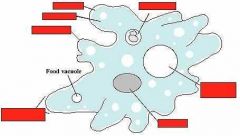
Identify the pseudopodia, nucleus, and vacuoles of the amoebozoans
|
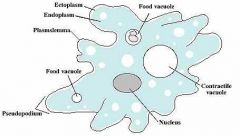
|
|
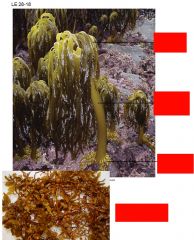
Identify which of the following are cellular and plasmodial slime mold:
|
NEEDSFILLIN
|
|
|
Opisthokonts are generally what?
|
Fungus and animals
|
|
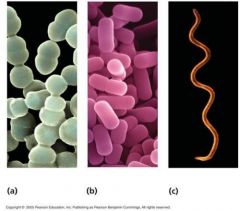
Identify bacteria shapes
|
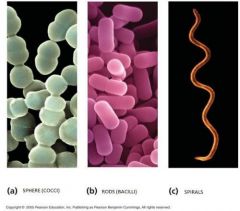
|
|

Identify Cyanobacteria: Nostoc and Anabaena
|
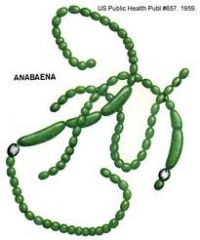
|
|
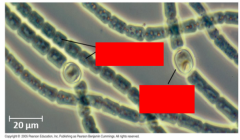
Identify Heterocytes:
|
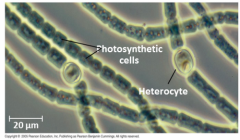
|
|
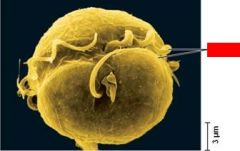
What is the red and what is this?
|
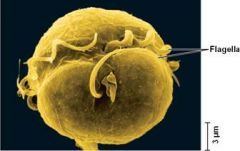
Flagella, and its a dinoflagellate
|

